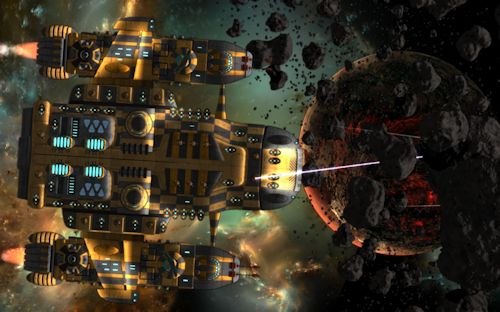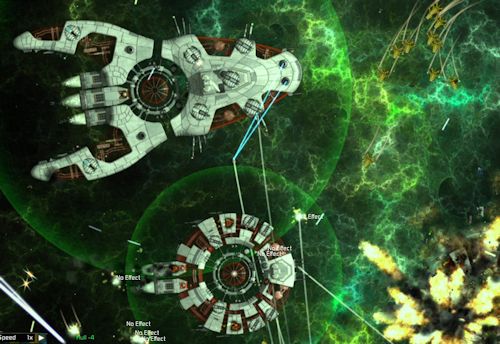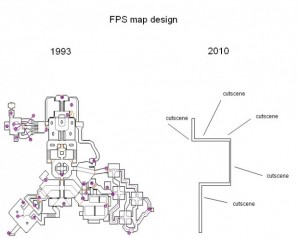I had a few negative reactions (not many) to some of my early screenshots and videos of Gratuitous Space Battles 2 Screenshots like this:

Basically people didn’t like the ship designs and colors. The colors were too gaudy, and they hated any hint of a checkerboard pattern because it makes them think of placeholder textures. This amused me, because actually the designs are based upon the artist chriss foss, who I liked as a kid. He did some really distinctive spaceship designs. Some people may dislike them, but in a world of identikit spaceships, his stood out.
So much for blocky color patterns, but the other criticisms (that the designs were not good) is more relevant, and serious. It is, of course, entirely a matter of personal opinion. For contrast, here is a few ships from GSB1:

Some of you may prefer that. So this blog post is here to make you feel better :D.
Firstly, do you know who designed the spaceships in all the GSB2 screenshots and videos? It was ME. ME!!!!! And I don’t have much of an artistic eye, or patience, or time. The basic components are done by the talented GSB1 artist, but then my totally clueless hands have been let lose on them, using an unfinished space ship designer, so this is what comes out. In other words, people with more of a sense of style, more patience, more time, and finished editor…should turn out MUCH nicer stuff. I’m also toying with the idea of actually paying someone to design the initial enemy ships for this very reason, although I’d love to try it myself…
The thing is, I am vastly more of a fan (as a player) of stuff that lets me put my mark on it. Sim City is great, but it’s even better when you have the building design tool. One of the appeals of minecraft is surely building things. People spend a crazy amount of effort just designing their clam logos for Battlefield 4. Give the player a ‘customize’ option, and you will lose them for an hour or ten. Even spore, a game that people rapidly dismissed as bad (despite earlier promise) had a huge number of high quality creature designs. And the ultimate example of people designing awesome spaceships so far is probably galactic civilizations 2, where people have clearly spent hours and hours designing the ultimate space battleship.
Yup, we may not all be experts, but I’ll take a ship I’ve customised over a ‘stock’ ship any day. People like to stand out, they like to create, they like to ‘play’. And this is where I like to think my games often cross the line from what people call ‘games’ into toys. I have never been a fan of scripting in games, or linear experiences. We have books and movies for that. Games give us freedom, freedom to experiment, to define our own rules, to invent, or at least they could…
 FPS Design over the years…
FPS Design over the years…
Back when I first started gaming, a lot of games gave you a sandbox experience. It was frankly easier and cheaper than level design, and limits of file sizes mean you simply couldn’t fit 200 hours of RPG backstory onto a floppy disk. This resulted in incredible free-form strategy epics like Lords Of Midnight. I really miss those times, and that encouragement for free-form experimentation. Kids these days do not really ‘play’ games. They ‘compete’ at them, to ‘win’, or to ‘beat’ them. This feels weird to me. I’m always playing to have fun, not to go along with what a designer has decided I will do that day. In the ideal Star Trek MMO, I’d just tend a ferengi bar, but the designer no doubt wants me to go ‘questing’…
Democracy is probably the most free-form of my games so far, but they all have a hint of it in them. Kudos didn’t really have a proper ‘end’ as such. there was no boss to beat or princess to rescue. It was a toolkit, a toy, and bunch of things to play with, woven together as a functional simulation that let you play out ‘what if’ scenarios.
That’s what GSB2 is. It’s a big pretty spaceship battle toolkit for you to have fun with. If anyone complains that they’ve ‘beaten’ it, or Democracy 3, then they haven’t understood the purpose of the product. A game is not a challenge from the designer to the player, but an environment created so the player can experiment and enjoy themselves. That’s why there are customizable spaceships in GSB2. It’s not about the designer, or the artist, but about the player, and I believe in giving the player as much control as possible.